Homemade Naan
This post may contain affiliate links. Read my full disclosure policy.
Learn to make irresistibly soft and pillowy naan in your own kitchen with this simple recipe – it far outshines any store-bought version.
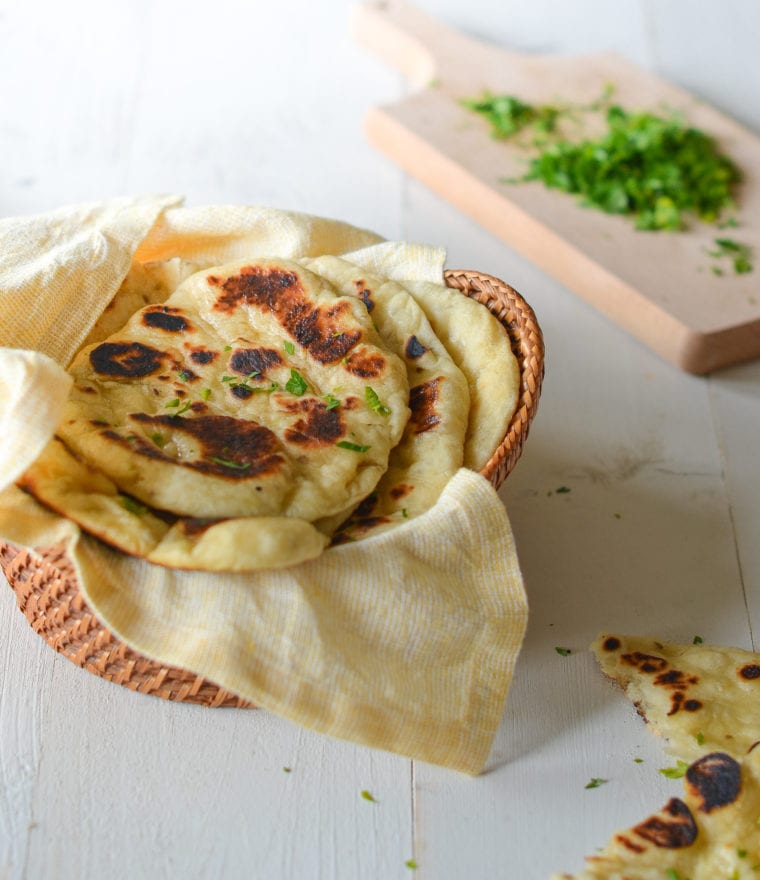
Naan is a soft, pillowy flatbread traditionally baked in a tandoor. This cylindrical clay or metal oven, prevalent in restaurant kitchens across the Indian subcontinent, the Middle East, and Central Asia, reaches scorching temperatures, imparting a distinct smoky flavor to foods. Naan dough, enriched with yogurt and olive oil and flavored with anise seeds, is rolled out and slapped against the tandoor’s inner walls, where it adheres and bakes swiftly over open flames. Once done, it’s brushed with melted butter.
In this recipe, I’ve replicated the tandoor’s high heat and charred flavor using a very hot cast iron skillet or nonstick pan. Making naan at home is so worth the effort—aside from the rising time, it’s quick to prepare, and the taste is leagues above store-bought versions! Paired with saucy dishes like chicken curry, butter chicken, or chicken tikka masala, homemade naan truly shines.
“The dough came together easily, was nice to work with and cooked up beautifully… My search for the perfect naan bread is over—this recipe is the best!”
What You’ll Need To Make Naan
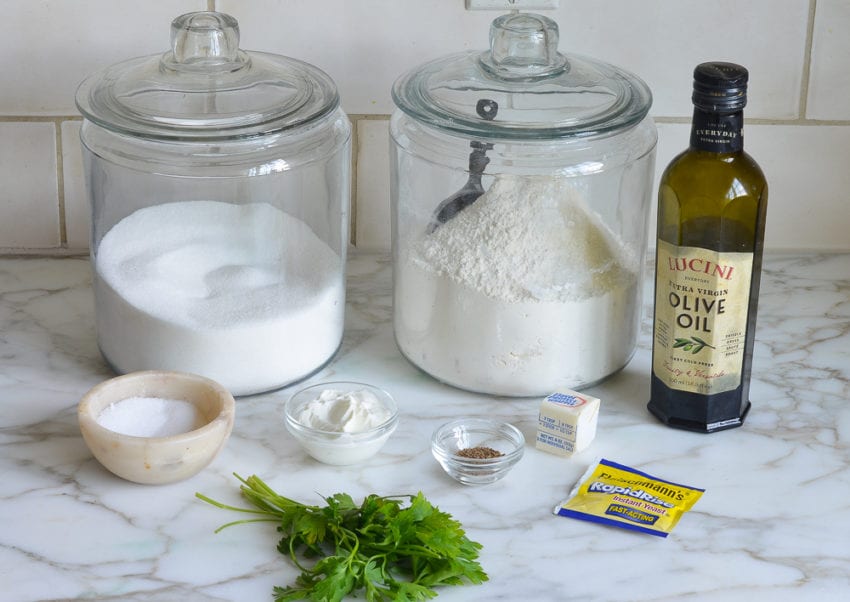
As you can see, the ingredients are very basic. The yogurt and olive oil add a bit of tang and richness. The anise seeds add just a hint of licorice flavor; feel free to leave them out, or replace them with nigella seeds (which have a subtle onion flavor), poppy seeds, or sesame seeds.
Step-by-Step Instructions
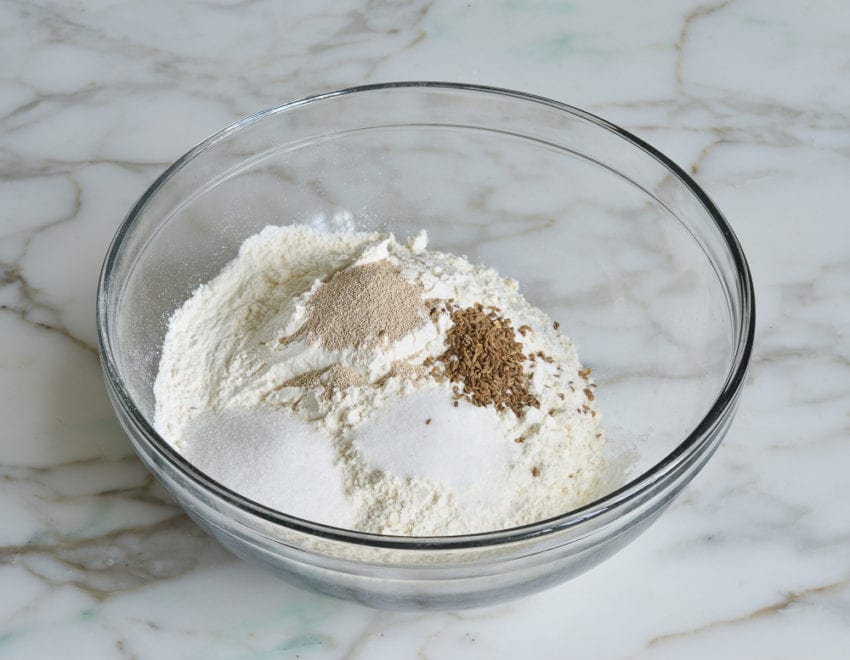
Begin by combining the flour, yeast, sugar, anise seeds and salt in a large bowl, then whisk to combine.
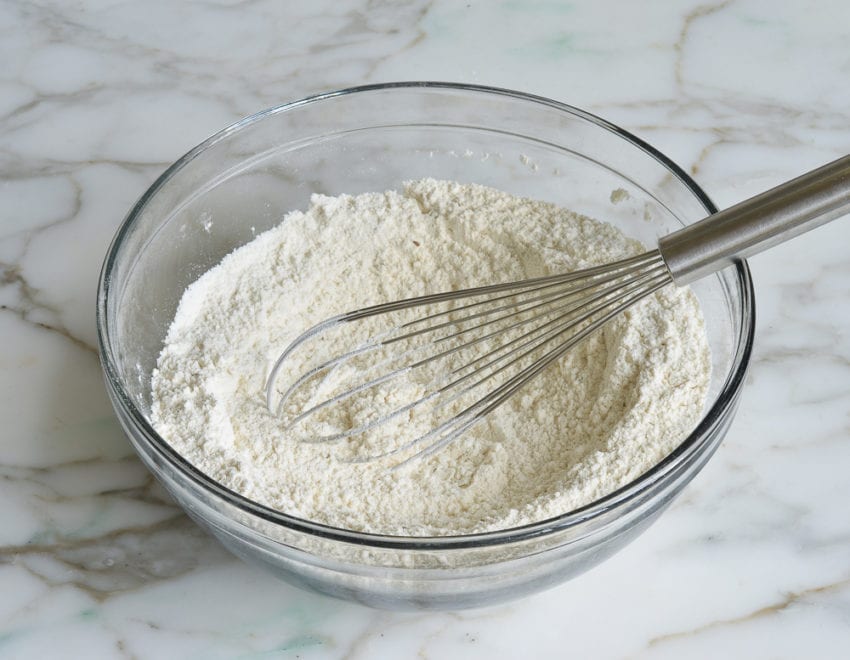
Whisk together the yogurt, olive oil, and warm water.
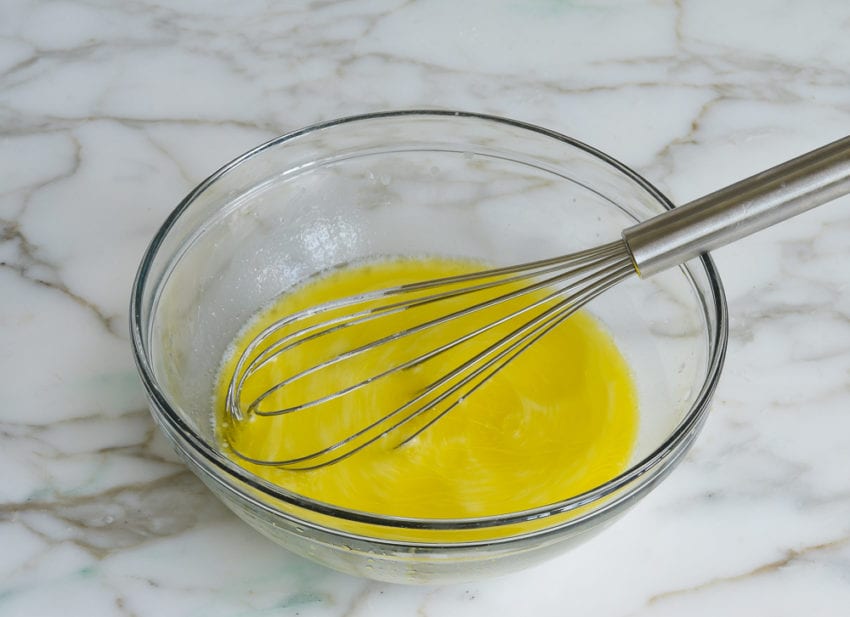
Add the liquid mixture to the dry ingredients.
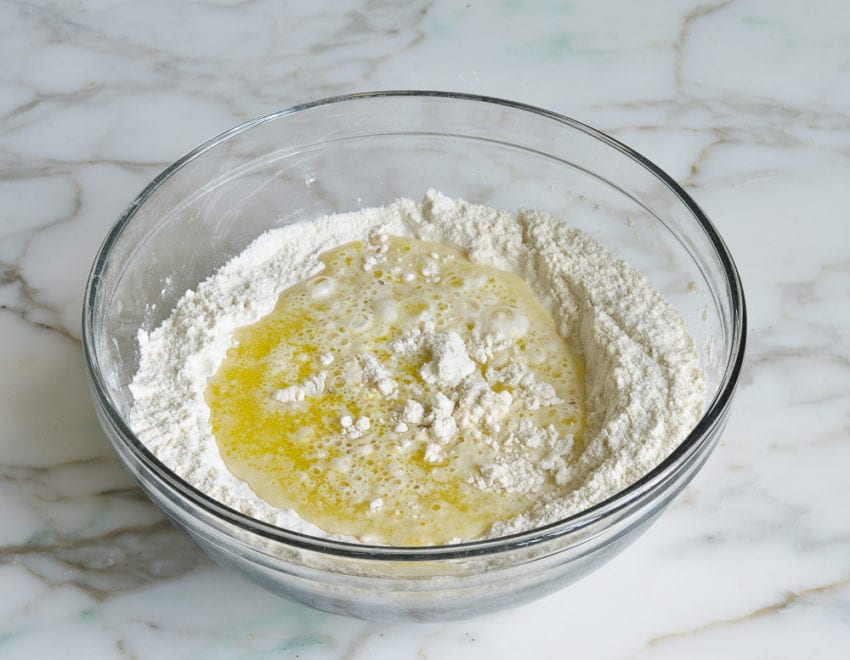
And stir with a fork until the dough comes together.
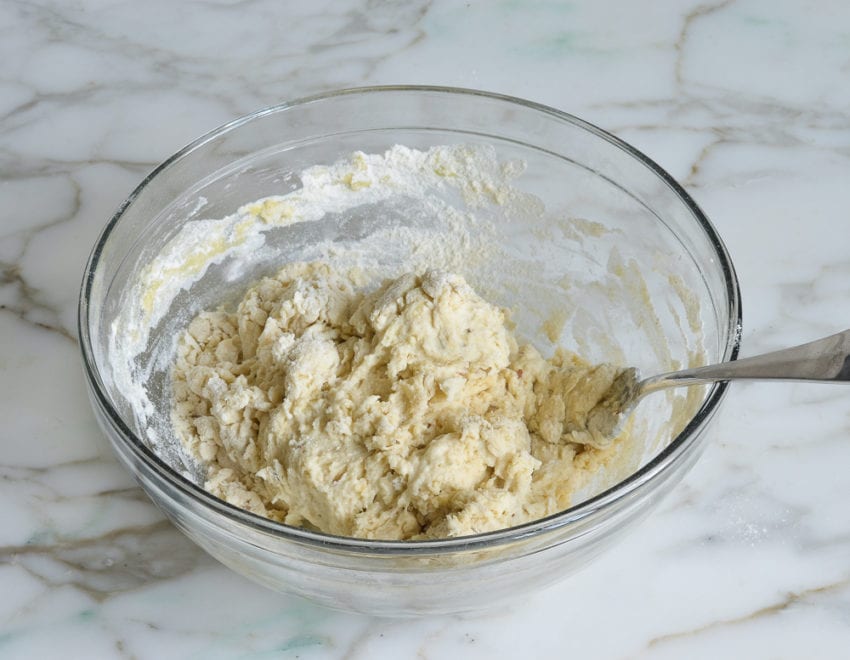
Dust your hands with flour and knead into a soft, sticky ball.
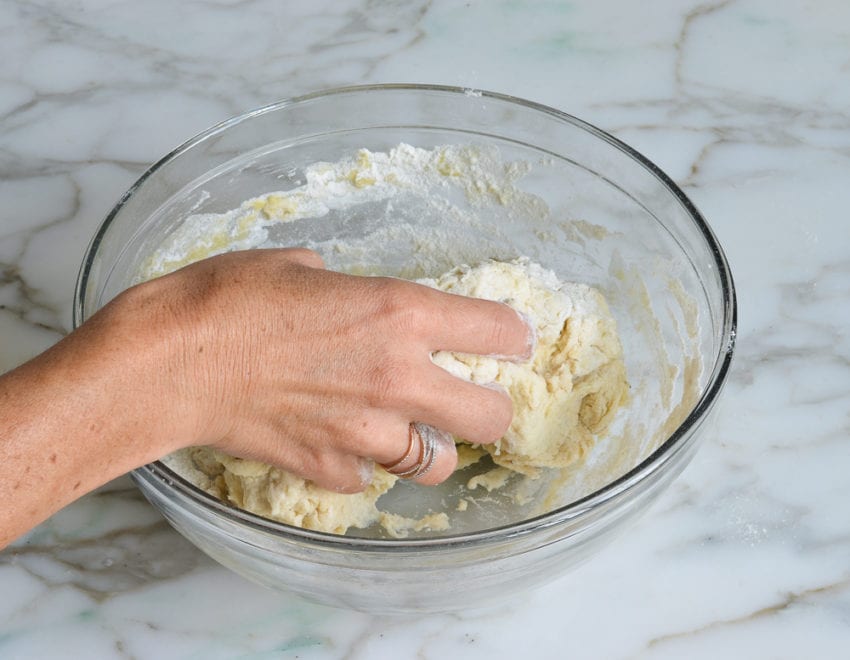
Cover with plastic wrap.
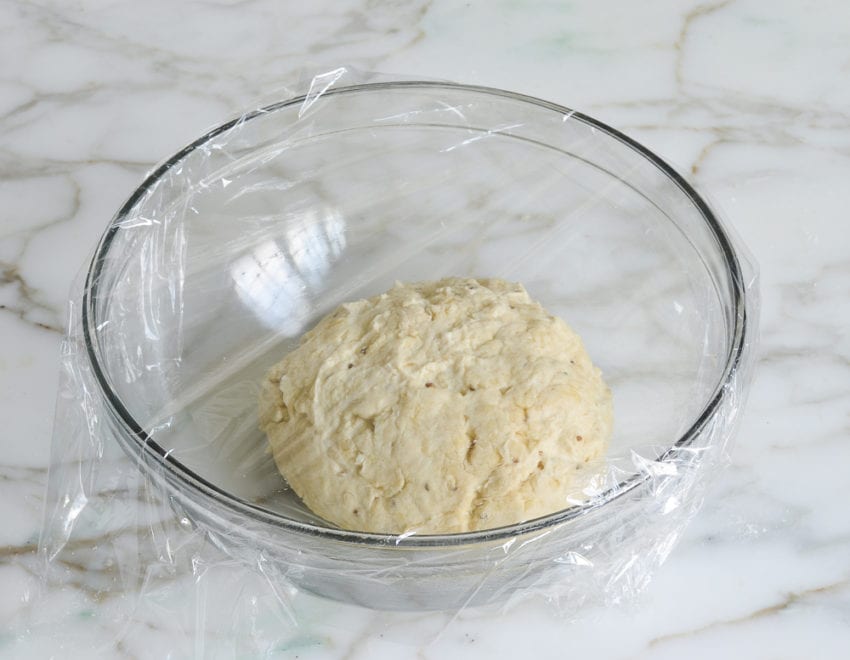
Let rise in a warm spot until about doubled in size, 1 to 1-1/2 hours. Hint: the warmer the spot, the faster it will rise.
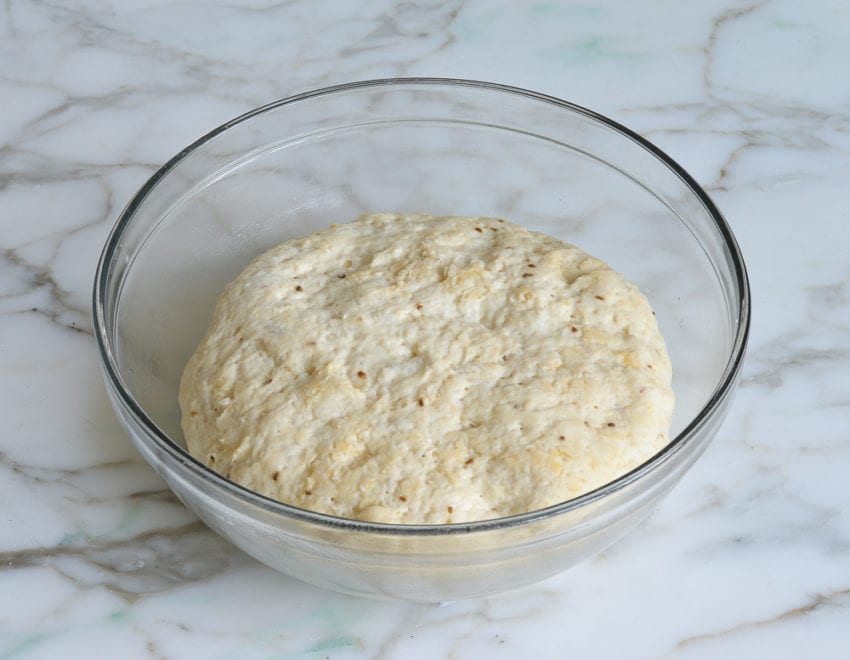
Fill a small bowl with flour. Dust some of the flour onto a work surface. Dump the dough on top and sprinkle the dough with more flour.
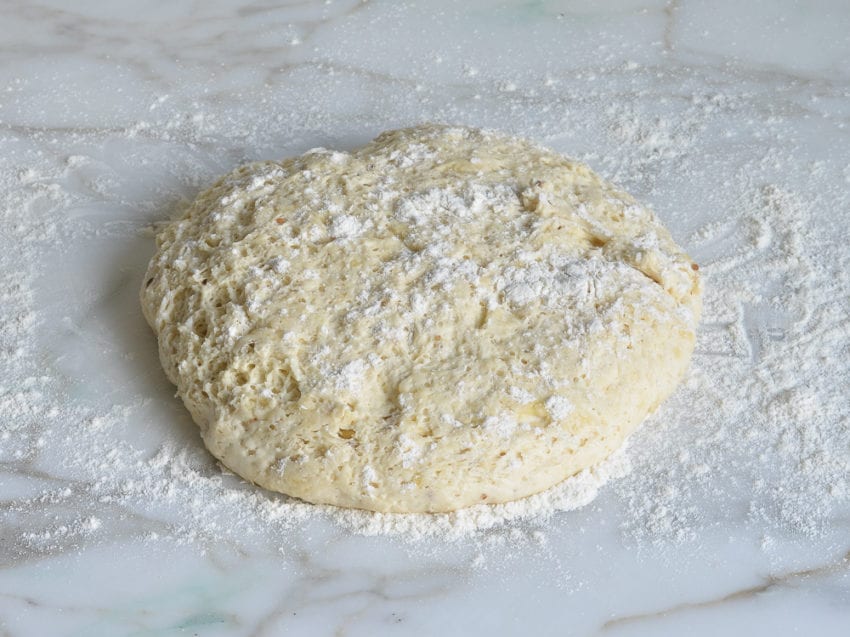
Shape the dough into a rectangle, adding more flour as necessary so it doesn’t stick.
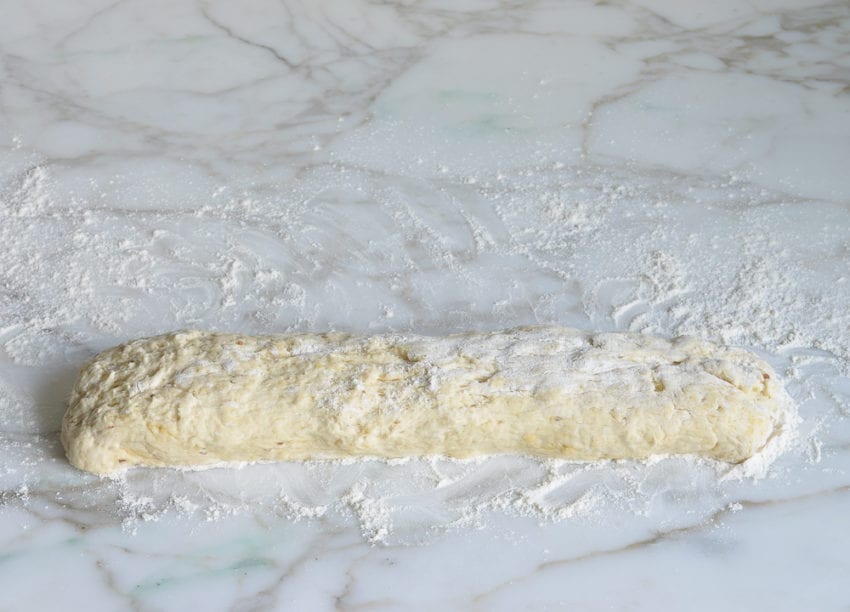
Then, divide into six equal portions.
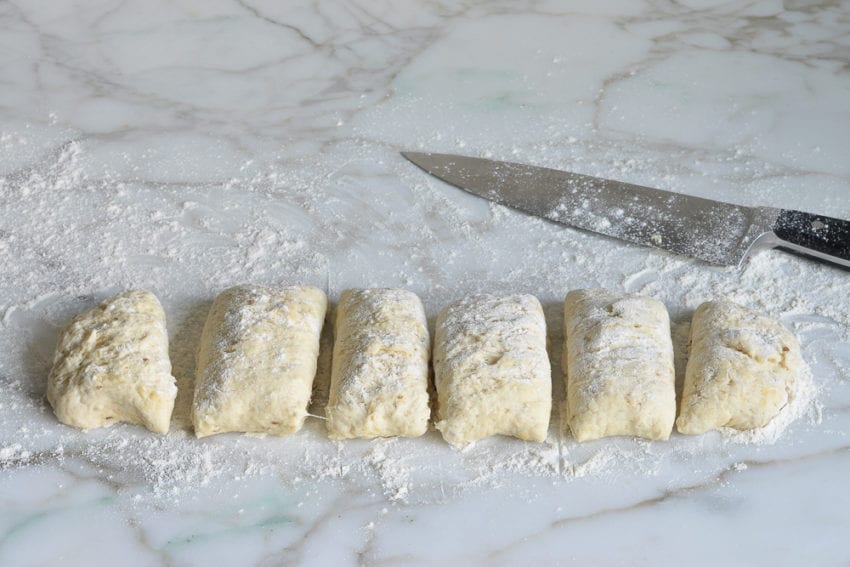
Heat a cast iron or heavy nonstick skillet over medium-high heat until very hot. While it heats, roll one of the dough balls into an oval about 1/8-inch thick.
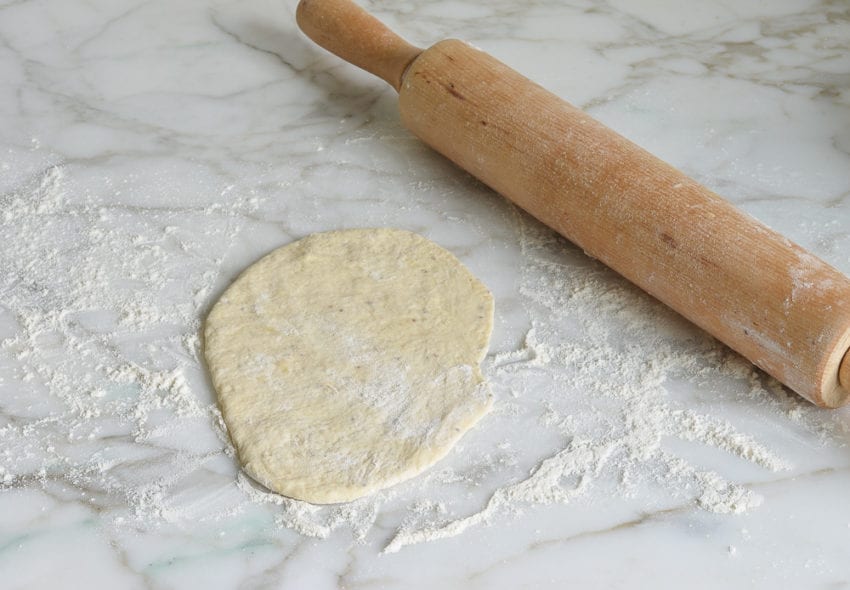
Place the dough in the hot, dry skillet and cook until the surface is full of air bubbles and the bottom is browned and blistered in spots.
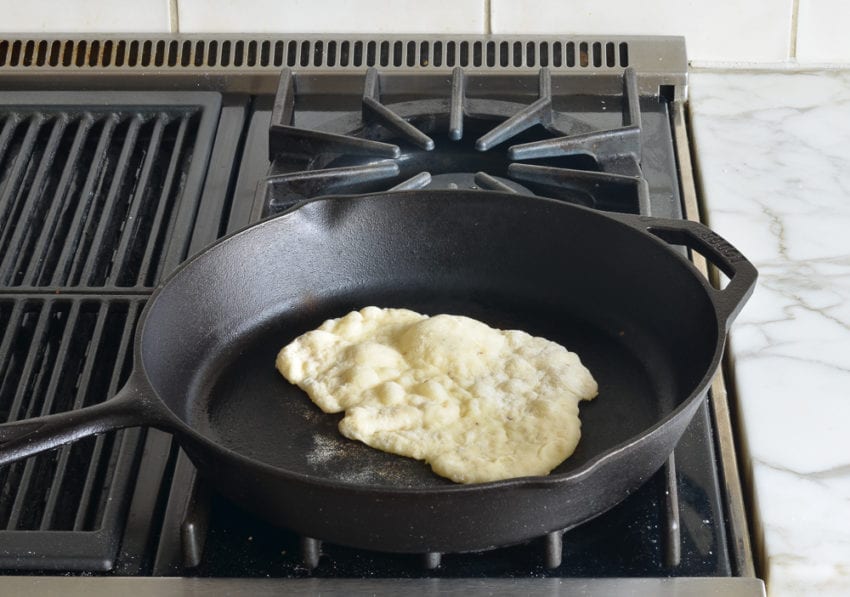
Flip the naan and cook a few minutes more.
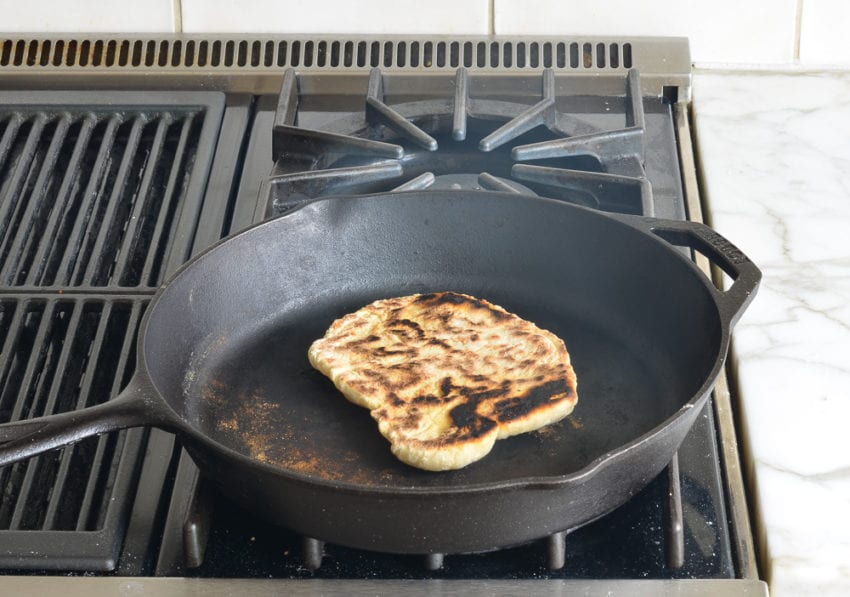
Brush the cooked naan with melted butter, and repeat with remaining dough balls.
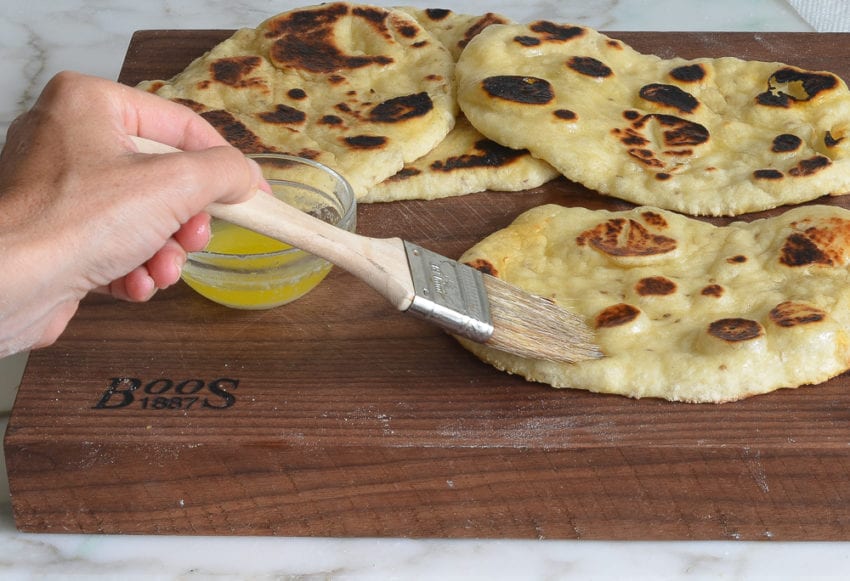
Sprinkle with parsley, if using, then serve warm.
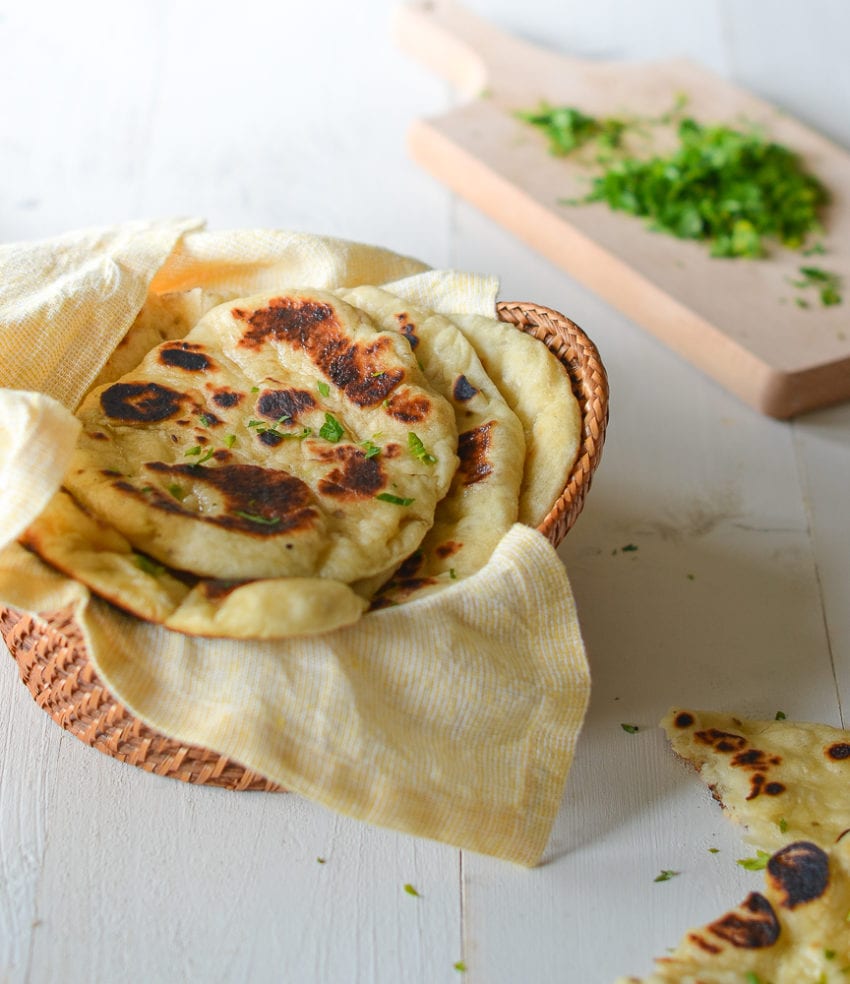
You may also like
Frequently Asked Questions
A: Depending on how far ahead you want to make the naan, you have a few options. If serving within one day, store the naan in resealable plastic bag at room temperature. For longer storage, wrap each piece of cooled naan securely in plastic wrap and put all the rounds in a sealable plastic bag, then freeze for up to 3 months. To reheat, wrap the naan in aluminum foil and warm in a 350°F oven until hot.
A: Instant yeast and active dry yeast are both types of yeast used in baking, but they have distinct differences. Active dry yeast has larger granules surrounded by a protective shell, which often requires it to be dissolved in warm water (a process known as proofing) before mixing with other ingredients. In contrast, instant yeast features finer granules without this protective layer, allowing it to dissolve and activate more rapidly. This means that instant yeast can typically be mixed directly into dry ingredients without the need for proofing.
A: Active dry yeast may be used instead of instant/rapid-rise yeast in this recipe, however, the dough will take longer to rise. To give active dry yeast a “head start” and speed things up, you can dissolve it in the lukewarm water and let it sit until frothy, about 10 minutes. After that, add it to the flour, sugar, salt, and anise seeds, and proceed with the recipe.
A: Sure! I’d add some minced garlic to some melted butter and brush it on the bread after it’s cooked.
Video Tutorial
Homemade Naan
Learn to make irresistibly soft and pillowy naan in your own kitchen with this simple recipe – it far outshines any store-bought version.
Ingredients
- 2 cups all purpose flour, spooned into measuring cup and leveled off with a knife, plus more for rolling (see note)
- 1 tablespoon sugar
- 1 teaspoon instant dry yeast/rapid-rise yeast (see note)
- 1 teaspoon salt
- Heaping ½ teaspoon anise seeds (optional)
- 3 tablespoons plain yogurt
- 2 tablespoons extra virgin olive oil
- ¾ cup warm water (about 100°F)
- 2 tablespoons melted salted butter, for brushing on finished naans
- 1 tablespoon chopped fresh Italian parsley (optional), for serving
Instructions
- In a large bowl, whisk together the flour, sugar, yeast, salt and anise seeds (if using). Set aside.
- In a medium bowl, whisk together, the yogurt, olive oil, and ¾ cup warm water (about 100°F). Add the yogurt mixture to the dry ingredients and mix with a fork. When the dough is about to come together, dust your hands with flour and knead gently into a soft, slightly sticky dough (sprinkle more flour, little by little, if the dough is too wet to work with). As soon as it comes together, stop kneading.
- Lightly oil or spray a clean bowl with nonstick cooking spray (the bowl should be large enough to allow the dough to double in size). Transfer the dough to the prepared bowl and cover with plastic wrap or a damp kitchen towel. Let sit in a warm place for 1 to 1½ hours, or until about doubled in size (hint: the warmer the spot, the faster the dough will rise).
- Fill a small bowl with about ½ cup flour. Dust a work surface with some of the flour and dump the dough on top. Sprinkle some of the flour on top of the dough and on your hands. Shape the dough into a long rectangle and cut into 6 equal portions, dusting with more flour as necessary so the dough doesn't stick. Roll each portion of dough in the bowl of flour to keep them from sticking.
- Warm a large cast iron or heavy nonstick pan over medium-high heat until very hot. Using a rolling pin, roll one of the dough balls into an oval shape about ⅛-inch thick (it should be about 9 x 4 inches). Pick up the dough and flip-flop it back and forth between your hands to release any excess flour; then gently lay the dough in the dry skillet and cook until the top is bursting with air bubbles and the bottom is golden and blackened in spots, a few minutes. Flip the naan and cook about 1-2 minutes more until the the bottom is lightly browned and blistered in spots. Remove the naan from the skillet and brush with melted butter. Place the naan in a tea towel-lined dish to keep warm. Repeat with the remaining naans, adjusting the heat lower if necessary as you go (I usually find it necessary to lower the heat to medium after the first naan). Sprinkle with parsley, if using, and serve warm.
- To keep the cooked naan warm, place them in a 200°F oven. Store leftovers in a Ziplock bag and reheat in a 350°F oven wrapped in foil.
- Note: I use King Arthur flour, which is higher in protein than some other all-purpose flours. If using a flour with a lower protein content, such as Gold Medal, you will likely need to add a few more tablespoons of flour.
- Note: Active dry yeast may be used instead of instant/rapid-rise yeast, however, the dough will take longer to rise. To give active dry yeast a boost, you can dissolve it in the lukewarm water and let it sit until frothy, about 10 minutes. After that, add it to the flour, sugar, salt, and anise seeds, and proceed with the recipe.
- Freezer-Friendly Instructions: The naan can be frozen for up to 3 months. Once it’s completely cooled, wrap each piece securely in plastic wrap and put all the rounds in a sealable plastic bag prior to putting in the freezer. To reheat, wrap the naan in aluminum foil and warm in a 350°F oven until hot.
Nutrition Information
Powered by ![]()
- Serving size: 1 naan
- Calories: 241
- Fat: 9 g
- Saturated fat: 3 g
- Carbohydrates: 35 g
- Sugar: 3 g
- Fiber: 1 g
- Protein: 5 g
- Sodium: 323 mg
- Cholesterol: 11 mg
This website is written and produced for informational purposes only. I am not a certified nutritionist and the nutritional data on this site has not been evaluated or approved by a nutritionist or the Food and Drug Administration. Nutritional information is offered as a courtesy and should not be construed as a guarantee. The data is calculated through an online nutritional calculator, Edamam.com. Although I do my best to provide accurate nutritional information, these figures should be considered estimates only. Varying factors such as product types or brands purchased, natural fluctuations in fresh produce, and the way ingredients are processed change the effective nutritional information in any given recipe. Furthermore, different online calculators provide different results depending on their own nutrition fact sources and algorithms. To obtain the most accurate nutritional information in a given recipe, you should calculate the nutritional information with the actual ingredients used in your recipe, using your preferred nutrition calculator.

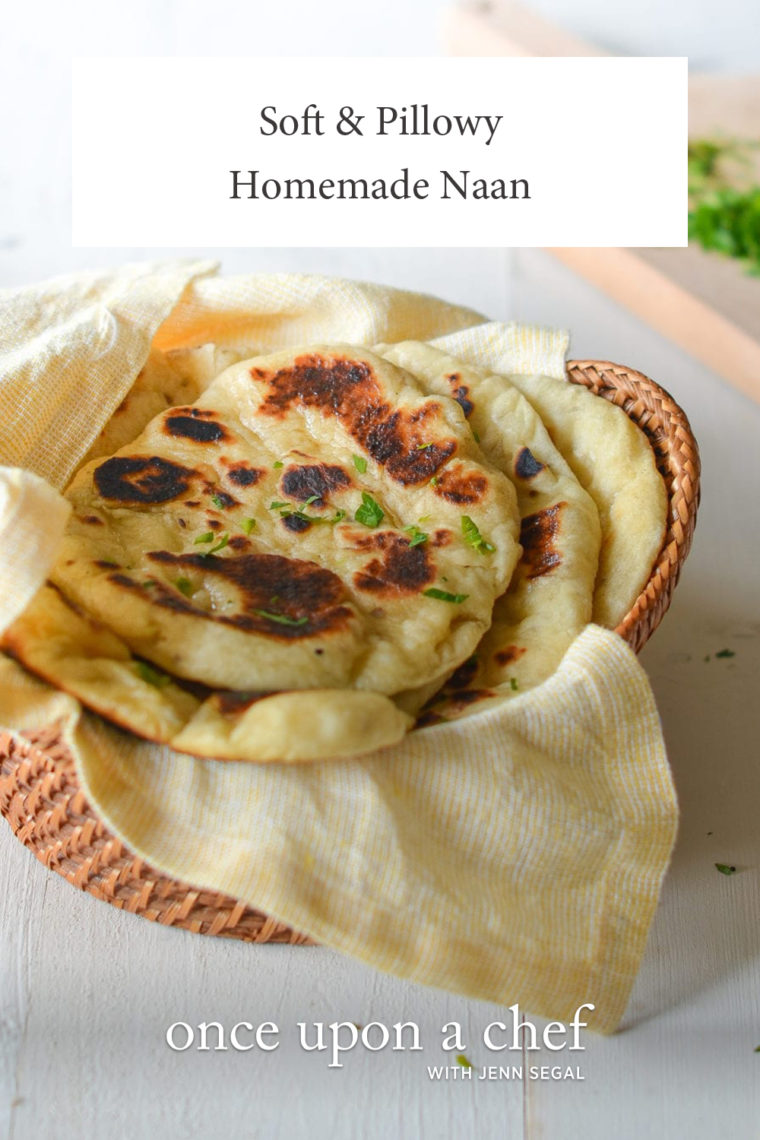

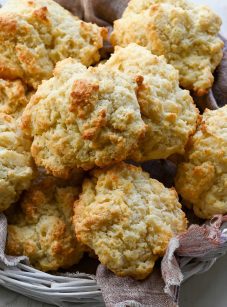
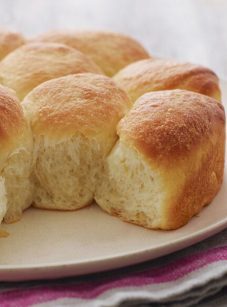
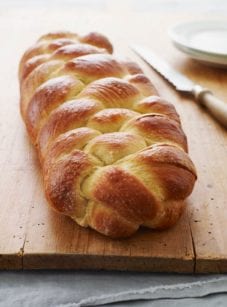
Dear Jenn,
Just finished eating dinner with my husband and these naans were our sauce scoopers. Main course was your chicken Marsala recipe, which also fabulous! But back to the naans: They remind me so much of my grandmas stove baked little breads (Turtite in Romanian), although hers were plain (no seeds or parsley in sight). Delicious!
Thank you,
Ana-Maria
Third time using this recipe. Perfect everytime. Thank you!
Made this to eat with homemade butter chicken and it was LOVELY. The texture and taste are so amazing.
This is a delicious recipe with very clear, well laid out instructions. I have used the recipe a few times now and will continue to use it when making naan bread in the future.
It’s not you it’s me! On an earlier review i gave this recipe three stars but thought it must be my problem as so many gave naan a 5 star review. Well i made it again and this time put my cheaters (reading glasses) on. On my first try i dusted each naan in flour just before i put them in the skillet and of coarse got extra burnt flour as a result. This time i used a large non stick pan instead of my somewhat narly cast iron pan followed instructions exactly. The naan were very tasty and far superior to store bought. Next time I will roll them out on a baking cloth instead of granite counter to reduce sticking to counter.
So glad you had better luck this time around — thanks for reporting back! 🙂
Making these for dinner tonight and would like to add rosemary. Do you think I should knead some rosemary into the dough or sprinkle on top after cooking? Thanks so much. Just love your recipes!
You can either add a bit of it into the dough or brush the finished nann with a little melted butter and then sprinkle some rosemary on. Hope you enjoy!
Wonderful recipe! I have made it 6 times in the last 2 weeks. And everyone who has tasted it has asked for the recipe because it’s that good!
My tweaks are that I mix it with a fork and don’t use my hands at all because it is sticky dough. I also start with only 1/2 a cup of water and add more by tablespoons until the dough forms a ball. I substitute fennel seeds or rosemary leaves (our favorite) for the anise – I use a heaping teaspoon. I also add a heaping teaspoon of ground garlic.
After it rises, I scrape it onto my clean counter sprinkled with flour and knead it until it forms a large circle which I cut into 8 equal pieces and form into smaller balls which I roll into very thin circles (using just as much extra flour as needed so it doesn’t stick). Most times I roll the balls twice, letting the dough relax in between forming a very thin circle of dough.
Try to shake off any extra flour before baking in the hot pan. You will find the excess flour just burns In the pan. They cook up beautifully!
I use olive oil to finish them instead of butter because, if you’re lucky, you might have one or two left for the next day and they don’t stick together with olive oil.
Thanks Jen for another GREAT recipe. My family begs me to make these! Super easy to do. Just plan ahead for the rise time.
This recipe was my first time using yeast or making any kind of bread, have made it twice now and it’s AMAZING! Thank you for sharing.
The first time round I added 3 x cloves of crushed garlic to the yoghurt/oil/water mixture for some garlic flavour. Second time round, I added 1 x clove of crushed garlic to the yoghurt/oil/water mixture and then rolled the naan out, added some tasty/cheddar cheese in the middle, pinched the sides together to close it up and then turned it upside down and rolled it out again before cooking, once cooked brushed with garlic butter to make cheesy garlic naan just like our favourite takeaway place! 🙂
Made these with my butter chicken tonight. Did have to add quite a bit of flour to combine completely. After though these were delicious! My family also loved them and I can’t wait to make again
I love this recipe! I make it about once a month along with her Tikka Masala recipe, and my family loves it. It reminds of of fresh, authentic Indian food found in London. The naan bread is probably my favorite part. Fresh and fluffy and great to dip in the sauce. I make 1.5X the recipe for 5 people and have a couple leftover. Also, you have to experiment with the iron skillet temp. Hotter is better than cold though, because a slow cook gets tough. Try a couple small pieces first. They should bubble in a couple minutes if it’s hot enough.
Thanks for the recipe. A couple of tips for first timers like me!
– Make sure the temperature of the skillet is hot or the dough may not bubble. Mine didn’t bubble until I rolled the dough thinner than recommended and then put it on the hot skillet.
– the dough can be quite sticky so I used extra flour when rolling it out to avoid it sticking to the rolling pin which it did a few times = broken dough!
– I found the flavour came from the melted butter and salt after cooking otherwise the naan was quite plain.